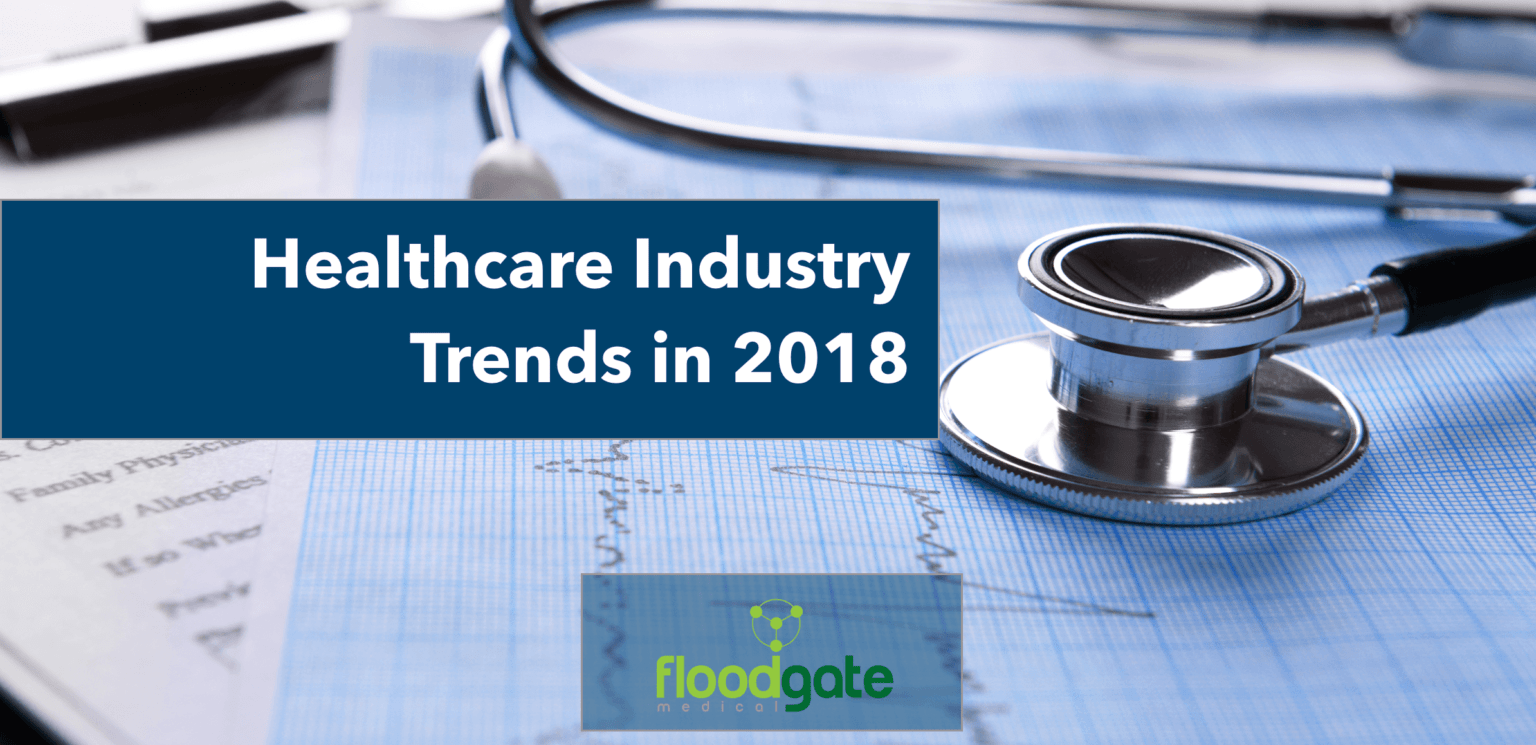
2018 Healthcare Industry Trends
Many recent changes in the healthcare industry have brought about new expectations for the year ahead. Technology has rapidly advanced within the past few years, and in many ways, the healthcare industry is still playing catch up. Baby boomers are getting older and requiring more care, and national healthcare policy still faces hurdles. To help our clients and candidates alike make strategic predictions this year, we have compiled our list of healthcare industry trends that we expect to see in 2018.
Consumers are Engaging More in their Health
Apple recently announced that they will be entering the personal health record space with the release of Apple Health, a new iPhone program that will be able to connect with electronic health records at twelve hospitals.
This falls on the heals of widespread consumer adoption of Fitbits, My Fitness Pal app, step trackers and the iWatch heartrate monitor. Individuals are becoming more involved in their health using technology, especially when it helps them to accomplish their goals, take advantage of insurance bonuses or combat rising deductibles. Apple developers will take consumer involvement to the next level with Apple Health.
Technological Innovation Continues
Additionally, the FDA recently announced their Digital Health Innovation Plan, which will streamline regulation for mobile devices. They hope these new guidelines will help to streamline technological innovation in the healthcare space.
As a result, consumers will insist upon access to easy to use and intuitive products. This will create a higher demand for a patient-centric experience across the board, both in the healthcare facility and when using the facility’s technology, such as the patient portal.
3-D Printing is a Game Changer
3-D printing technology has become more and more important to the medical field each and every year. 3-D printed organs and bodies can now help surgeons plan for procedures and are also replacing cadavers in the lab.
According to an article published in The National, 3-D printing is helping doctors provide more precise, faster treatment with more control.
Additionally, 3-D printers are now being used to create dental implants and titanium replacement joints, which tend to last longer than traditional joint replacements. 3-D printing will likely continue to advance this year, and have a significant impact on the medical field.
Cybersecurity is Even More Important
The issue of cybersecurity is always a hot topic and, recently, particularly in the healthcare industry. One of the largest healthcare providers in Norway recently became victim to a data breach that gave hackers access to around 2.5 million people, or half the country’s, sensitive information. When we take a look at security threats in the U.S., it doesn’t make us feel all warm and fuzzy inside. Not even close.
According to a recent survey conducted by Accenture, 83% of healthcare providers surveyed have experienced some type of cyber attack. While this is a scary thought, it presents a great opportunity for improvement. Healthcare organizations should know that they can work with the Department of Homeland Security to fight off a cyber attack, and should also develop protocols to have plans for detection and response to a cyber attack in place.
End-of-Life and Palliative Care will Rise
We will also see a higher demand for end-of-life and palliative care this year. About 74.1 million U.S. citizens are considered to be baby boomers, meaning they were born between 1954 and 1964. Some common health conditions that baby boomers face include asthma, obesity, diabetes, arthritis and multiple sclerosis.
With rising costs of health insurance, many baby boomers will likely switch to Medicare. Chronic conditions in baby boomers could result in a spike in Medicare costs across the board, potentially causing a future tax hike for future generations.
With a greater need for end-of-life and palliative care, we will see an increase in demand for medical caretakers, who are already generally short-staffed. The healthcare industry as a whole will also see an increased demand in devices that help to treat conditions common among the elderly.
Addressing the Opioid Crisis
The opioid crisis in our country continues to remain a major issue. It is estimated that there were 17% more opioid related deaths in 2017 than 2016. As a result, physicians are changing the way they prescribe opioids, and many chronic pain patients are finding it more difficult to get opioid medications.
We will also continue to see a push for alternative pain treatment options, including implants, physical therapy and alternative medications.
What Do these Predictions Mean for Employers and Job Seekers?
There will be an emphasis on technological skills in the workplace with the continued advancements in the healthcare industry. Organizations should embrace innovation and take security precautions to avoid getting left behind.
The baby boomer aging issue, opioid crisis and healthcare reform in the U.S. will all have major impacts on the healthcare industry as a whole. Employers and job seekers should stay up to date on these conversations to help them make better informed choices when making decisions for the future.
If you are an employer that would like to effortlessly connect with top medical sales and marketing candidates, contact us today to learn more about how FloodGate can help.




